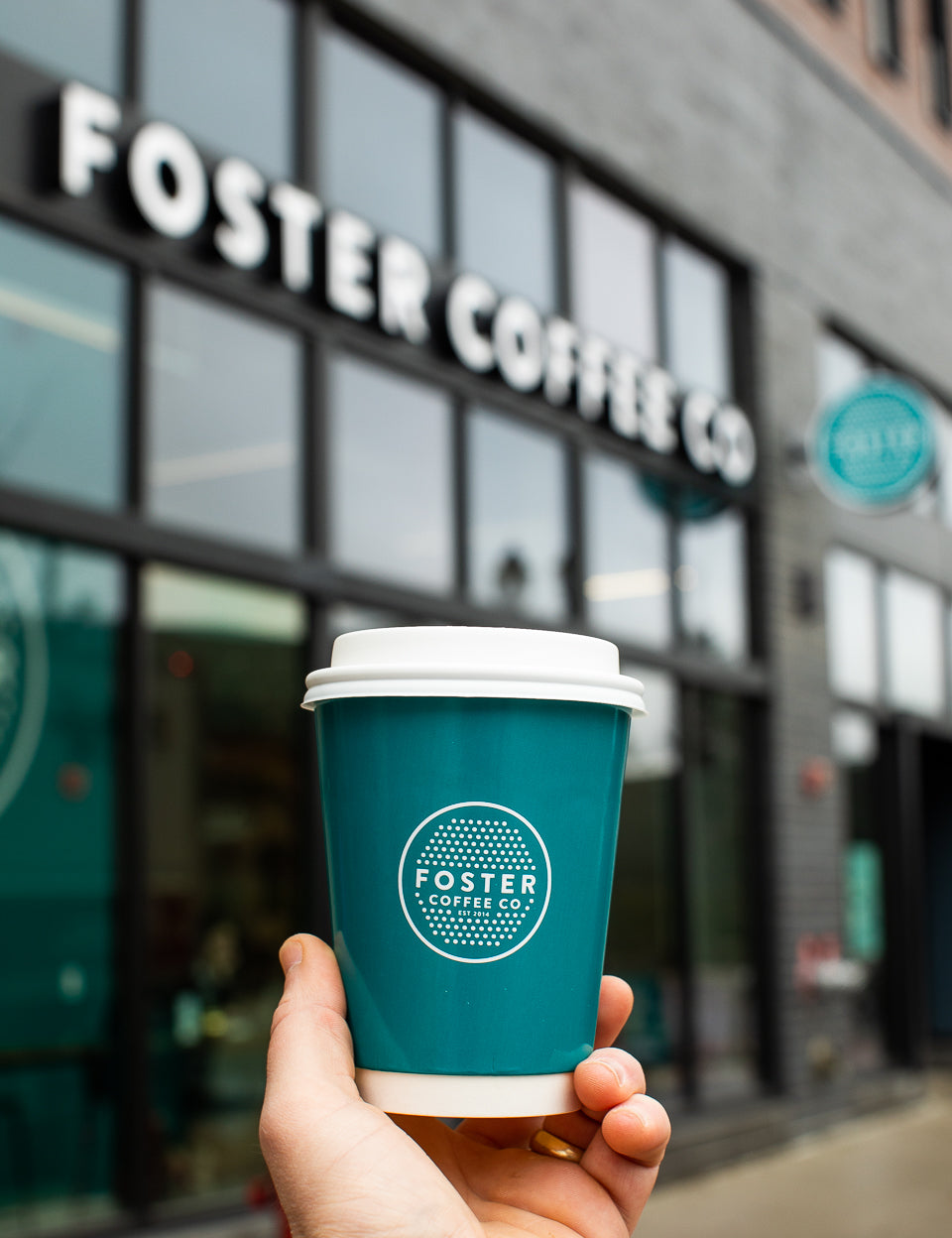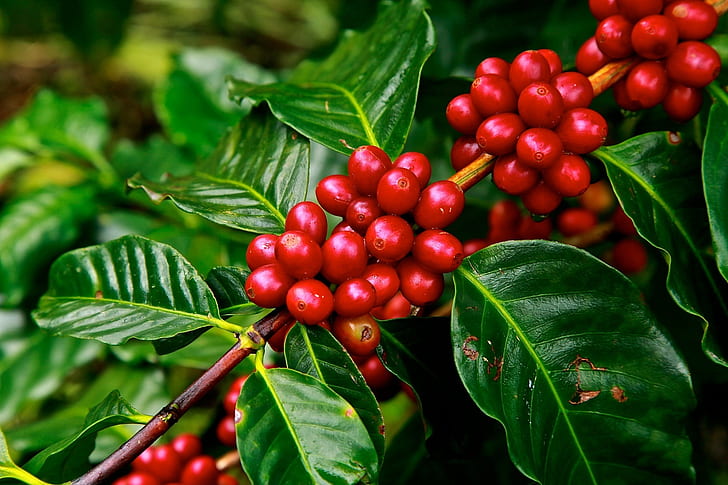Coffee 101: The Ultimate Deep Dive into Coffee Terminology – From Bean to Brew

Introduction
Welcome, coffee aficionados and budding baristas! The world of coffee is a fascinating realm brimming with unique terminology, intricate processes, and a symphony of flavors. Whether you're a seasoned coffee enthusiast or just beginning to explore this caffeinated universe, understanding the language of coffee can unlock a whole new level of appreciation for your daily brew.
In this extensive guide, we'll embark on a deep dive into the vast vocabulary of coffee, covering everything from the different types of beans and their origins to the diverse brewing methods and the nuances of flavor profiles. By the end of this journey, you'll be equipped with the knowledge to confidently order your next cup, engage in conversations with fellow coffee lovers, and even experiment with brewing techniques at home like a pro!
Section 1: Bean Voyage – From Seed to Cup

Before we delve into the intricacies of coffee lingo, let's first trace the journey of a coffee bean from its humble beginnings as a seed to the delightful beverage in your cup.
- Cultivation: Coffee plants flourish in tropical climates, often at higher altitudes where cooler temperatures and ample rainfall create ideal growing conditions. The two main species of coffee plants are Arabica and Robusta, each with distinct characteristics.
- Harvesting: Coffee cherries, the fruit that contains the beans, are carefully hand-picked or strip-picked when they reach optimal ripeness. This labor-intensive process ensures that only the highest quality cherries are selected.
- Processing: After harvesting, the beans must be extracted from the cherries. There are three main processing methods:
- Washed: Cherries are pulped, fermented, and washed, resulting in clean, bright flavors.
- Natural: Cherries are dried whole, imparting fruity and wine-like notes.
- Honey: A hybrid process where some of the fruit pulp is left on the beans during drying, leading to sweet and complex flavors.
- Roasting: Green coffee beans are transformed into the fragrant, flavorful beans we know and love through roasting. Roasting is a delicate art that requires precise control of temperature and time. Roast levels range from light (bright and acidic) to medium (balanced) to dark (bold and smoky). Grinding: Roasting beans are ground to a specific size depending on the brewing method. Proper grind size is crucial for optimal extraction and flavor.
- Brewing: This is where the magic happens! Hot water is used to extract flavor compounds from the ground coffee. There are countless brewing methods, each offering a unique experience.
Section 2: Coffee Bean Varieties: A Flavorful Spectrum
- Arabica (Coffea arabica): This species is prized for its complex flavors and aromas. Arabica beans are known for their sweetness, acidity, and nuanced notes of fruit, flowers, chocolate, and nuts. They typically have a lower caffeine content than Robusta beans and are considered the premium choice for specialty coffee.
- Robusta (Coffea canephora): Robusta beans are hardier and easier to grow than Arabica. They have a higher caffeine content and a bolder, more bitter flavor profile. Robusta is often used in espresso blends for its crema-producing qualities and can also be found in instant coffee.
- Liberica (Coffea liberica): A less common variety with a smoky, woody flavor profile. Liberica beans are primarily grown in Southeast Asia and are not widely used in specialty coffee.
- Excelsa (Coffea excelsa): Another rare variety, often considered a sub-species of Liberica. Excelsa beans have a unique tart and fruity flavor profile.
Section 3: Single Origin vs. Microlot: Unveiling Origin's Nuances
- Single Origin: Coffee beans sourced from a specific country or region. Single origin coffees showcase the unique terroir of the region, reflecting the soil, climate, and processing methods used.
- Microlot: A small batch of coffee beans harvested from a specific plot within a single farm. Microlots are known for their exceptional quality and unique flavor profiles, as they reflect the specific microclimate and growing conditions of that particular plot.
|
Section 4: Coffee Blends: The Art of Combining Flavors
- Coffee Blends: A combination of coffee beans from different origins, carefully crafted by roasters to achieve a desired flavor profile. Blends can be as simple as two origins or as complex as a mix of five or more.
- Benefits of Blends:
- Consistency: Roasters can create blends with consistent flavor profiles year-round, even when single origin coffees are out of season.
- Complexity: Blends offer a multi-layered flavor experience, where different beans complement and enhance each other.
- Versatility: Blends can be tailored for specific brewing methods or taste preferences.
Section 5: Brewing Methods: Unlocking the Flavors
The way you brew your coffee significantly impacts its flavor. Here's a look at some popular methods:
- Pour-Over (Drip): A manual brewing method where hot water is poured over coffee grounds in a filter. Pour-over coffee is known for its clean, nuanced flavors and allows for precise control over the brewing process.
- French Press (Immersion): Coffee grounds are steeped in hot water and then filtered using a plunger. This method produces a full-bodied, robust cup with a rich mouthfeel.
- Espresso (Pressure): Hot water is forced through finely-ground coffee under high pressure, resulting in a concentrated, flavorful shot. Espresso is the base for many coffee drinks, including lattes, cappuccinos, and Americanos.
- AeroPress (Hybrid): This versatile brewer combines immersion and pressure to create a smooth, flavorful cup.
- Cold Brew (Steeping): Coffee grounds are steeped in cold water for an extended period, resulting in a smooth, low-acid concentrate.
- Iced Coffee (Drip): Coffee is brewed hot, directly into ice. The amount of water used to brew is offset by the ice to avoid dilution. Brewing hot allows more nuanced flavor profiles as compared to cold brew.
Section 6: Coffee Drinks: From Classic to Creative
- Espresso: A concentrated shot of coffee, the foundation for many espresso-based drinks.
- Americano: Espresso diluted with hot water.
- Macchiato: Espresso with a small amount of milk foam.
- Cortado: Equal parts espresso and steamed milk, served in a small glass.
- Flat White: Similar to a latte, but with less milk and a smoother, velvety texture.
- Cappuccino: Similar to a latte, but with a thicker layer of foam and a dusting of cocoa powder.
- Latte: Espresso with steamed milk and a thin layer of microfoam.
- Flavored Latte: Latte with syrup.
Section 7: Flavor Profiles: Tasting Notes and Beyond
- Acidity: The bright, tangy quality of coffee, ranging from citrusy to berry-like. Desirable acidity adds liveliness and complexity to the flavor.
- Body: The weight or mouthfeel of the coffee, often described as light, medium, or full-bodied.
- Aroma: The fragrance of the coffee, which can offer hints of the flavors you'll experience when tasting.
- Flavor Notes: Specific flavors detected in the coffee, such as floral, fruity, nutty, chocolatey, caramel, or spice.
- Finish: The lingering aftertaste of the coffee, which can be sweet, lingering, or dry.
Section 8: Coffee Lingo Decoded
- Barista: A skilled coffee professional who prepares and serves coffee drinks.
- Crema: The golden-brown froth that forms on top of a well-pulled espresso shot.
- Cupping: A professional coffee tasting method used to evaluate coffee quality and flavor.
- Direct Trade: A model where roasters buy directly from farmers, fostering transparency and fair prices
- Extraction: The process of dissolving coffee flavors from the grounds into water. Proper extraction is key for a balanced and flavorful cup.
- Fair Trade: A certification that ensures farmers receive fair prices for their coffee beans, promoting sustainability and ethical practices.
- Microlot: A small batch of coffee beans harvested from a specific plot within a farm, known for their unique flavors and limited availability.
- Single Origin: Coffee beans sourced from a single geographic region, country, or farm.
- Third Wave Coffee: A movement that emphasizes high-quality coffee, direct trade relationships with farmers, and the craft of brewing.
Section 9: Roasting: Transforming Beans into Flavorful Treasures
Roasting is where the true magic happens. It's the process of transforming green coffee beans into the aromatic, flavorful beans we use to brew our daily cup. Roasting is both a science and an art, requiring a deep understanding of coffee chemistry and a skilled hand to create the perfect roast profile.
Roast Levels:
- Light Roast: Beans roasted for a short time, preserving their natural acidity and delicate flavors. Expect bright, fruity, and floral notes.
- Medium Roast: A balance of acidity and sweetness, with notes of caramel and chocolate often emerging.
- Medium-Dark Roast: A richer, fuller-bodied coffee with more pronounced bittersweet flavors.
- Dark Roast: Beans roasted for a longer time, developing smoky, dark chocolate, and even burnt notes. Acidity is low, and the body is heavier.
Section 10: Coffee Grind Size: The Key to Perfect Extraction
The grind size of your coffee beans plays a crucial role in how the flavors are extracted during brewing.
- Coarse Grind: Similar to sea salt, used for French press and cold brew.
- Medium-Coarse Grind: Like rough sand, ideal for Chemex or percolator brewing.
- Medium Grind: A versatile grind for drip coffee makers and pour-over methods.
- Medium-Fine Grind: Resembles table salt, suitable for AeroPress and some pour-over methods.
- Fine Grind: Like powdered sugar, used for espresso.
- Turkish Grind: The finest grind, almost like flour, used for Turkish coffee.
Section 11: Coffee Flavor Descriptors: A Sensory Journey
Describing coffee flavors can be a delightful adventure. Here are some common terms you might encounter:
- Floral: Jasmine, rose, bergamot
- Fruity: Berry, citrus, stone fruit, tropical fruit
- Nutty: Almond, hazelnut, peanut, walnut
- Chocolatey: Dark chocolate, milk chocolate, cocoa Caramel:
- Butterscotch, toffee, molasses
- Spice: Cinnamon, clove, nutmeg, black pepper
- Earthy: Mushroom, cedar, tobacco
- Winey: Blackberry, red wine, cherry
Remember, everyone's taste buds are different, so don't be afraid to experiment and discover the flavors you enjoy most. For a more comprehensive flavor profile, check out the interactive SCA flavor wheel.

Conclusion
We've journeyed through the fascinating world of coffee terminology, from the humble bean to the expertly crafted brew. Armed with this newfound knowledge, you can confidently explore the diverse flavors and aromas that coffee has to offer. Remember, coffee is a personal journey, so embrace the diversity and discover the perfect cup that speaks to your taste buds and soul.




